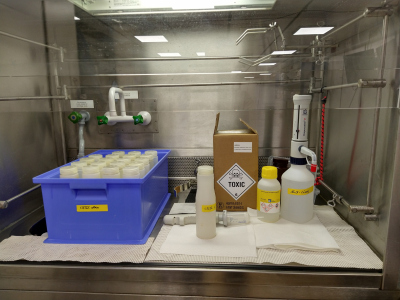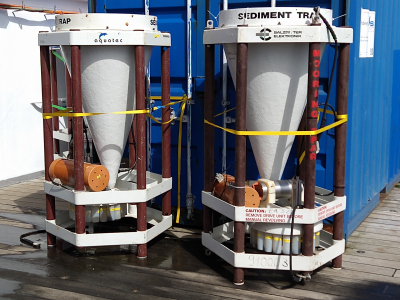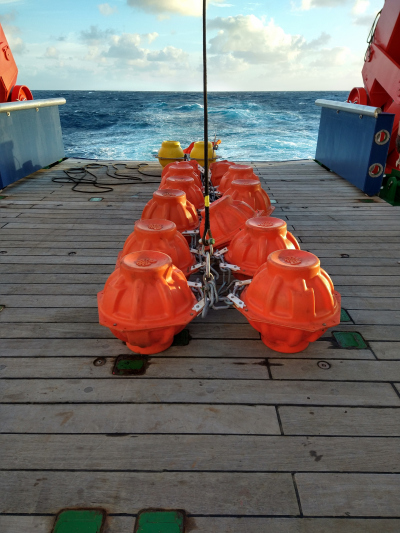- AG Kucera
- MARUM Cape Blanc Sediment traps
- Standard analyses
Standard analyses
The following variables are routinely determined on all samples. Swimmers (>1 mm) are removed prior to all analyses. Mass is always measured and the other measurements when sufficient material is available. The first five variables are directly measured, the last two are derived from the measured variables. All measurements are carried out by the sediment trap team at MARUM.
Mass
Mass is determined on two 1/5 splits of the samples. Splits are obtained using a rotary splitter. Splitting accuracy is typically below 10 % of the sample mass, but may be higher in small samples.
pH
The pH of the supernatant is only available for some (newer) deployments.
Opal content
Opal content is measured using sequential leaching with 1M NaOH at 85 °C. The precision of the overall method based on replicate analyses is mostly between ±0.2 and ±0.4 %. Further details are provided here.
Carbon and nitrogen content
Carbon and nitrogen content are measured using an element analyser (HERAEUS) with an analytical precision based on internal laboratory standards was better than 0.1 % (±1σ). Measurements were done before and after removal of carbonates with 2 N HCl to determine the total and organic carbon (Corg) content, respectively.
Carbonate and lithogenic content
These variables can be calculated from the carbon and opal content measurements. Carbonate can be derived exactly using its molecular mass:
Carbonate% = (Ctotal% - Corg%)*8.33
The lithogenic content can be approximated using:
Lithogenic% = 100 - opal% - carbonate% - organic matter%
where
organic matter% = 2 * Corg%
because approximately half of the marine organic matter consists of organic carbon.






